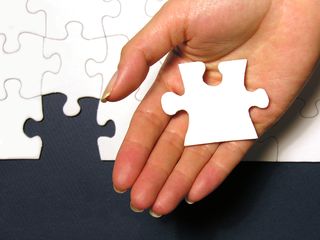Income Allowance:
Thanks for coming back for another session of MMMNA school. There's a lot to this issue, and it can get a bit complex, but it's an important component in Medicaid planning.
This post is part three of our series on determining MMMNA, the minimum monthly maintenance needs allowance, which is the minimum income allowance for the community (or well) spouse in a Medicaid claim. If you didn't see the first post, you can find that here, and part two is here.
 Our last post got into a few scenarios involving MMMNA, but there are some additional income allowances that we need to cover. The institutionalized spouse is allowed a personal needs allowance, which as we said, ranges from $30 to $106.50, depending on the state. The applicant is also given allowance to help pay for health insurance. So Medicaid basically says, we don’t want to get stuck being the primary insurance payer, so in addition to your personal needs allowance, we’re going to allow you enough money to pay your health insurance premium so your insurance company can be the insurance of first resort and Medicaid can be your backup.
Our last post got into a few scenarios involving MMMNA, but there are some additional income allowances that we need to cover. The institutionalized spouse is allowed a personal needs allowance, which as we said, ranges from $30 to $106.50, depending on the state. The applicant is also given allowance to help pay for health insurance. So Medicaid basically says, we don’t want to get stuck being the primary insurance payer, so in addition to your personal needs allowance, we’re going to allow you enough money to pay your health insurance premium so your insurance company can be the insurance of first resort and Medicaid can be your backup.
To be clear, Medicaid only exempts the cost of health insurance for the institutionalized spouse, not the community spouse. So, only the institutionalized spouse gets the personal needs allowance and the health insurance allowance. The community spouse gets the MMMNA, which we’ve already talked about. In addition, about 25% of the states also have a housing and shelter allowance, and another 25% of the states have a heating and utility allowance. These allowances are a state specific issue. The federal law does permit it, but not all the states do it. And again, it's for the community spouses only, with the intent being to make sure that community spouses have sufficient income to stay in their homes.
So again, institutionalized spouses gets their personal needs allowance of somewhere between $30 and $106.50 and they get to keep the cost of their health insurance so they can continue to pay that. Medicaid will let them do that. And the community spouse gets the MMMNA that we reviewed previously. Also, the community spouse could get a housing and shelter allowance or a heat and utility allowance if the state permits it. That's it, period. If you’ve got that down, that’s all you’ve got to know; it’s never going to change. If you're confused, it's because you’re trying to make it do something else, but it's really that simple. You just have to apply the rule.
So, no matter what fact pattern is that you are looking at, the first thing you need to determine is whether you are looking at a max state or a range state, then follow the methodology we shared in the previous two posts. Next look at the income of the husband, then look at the income of the wife. Figure out which spouse is in the nursing home, and which spouse is in the community. Then you can calculate the MMMNA. And in addition to the MMMNA, you will possibly have the housing and shelter allowance and the heating utility allowance, depending on the state. Of course, if the applicant is not married, you don’t even have to worry about that MMMNA calculation. All of the income that a single applicant gets to keep is the personal needs allowance and the health insurance premium amount.
You are probably thinking, OK, that's not so tough. And you're right, but you're not through it yet. Our next post will cover the income cap rules that factor in, so check back soon for that.



Add a Comment